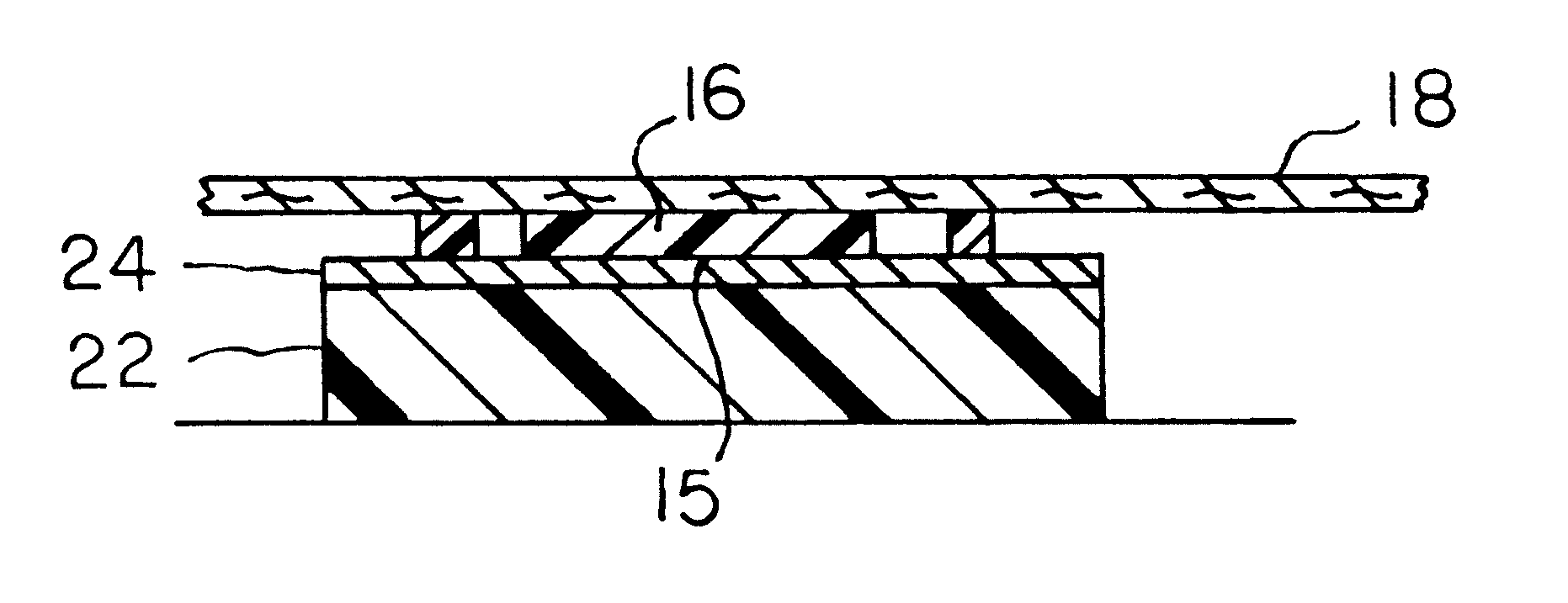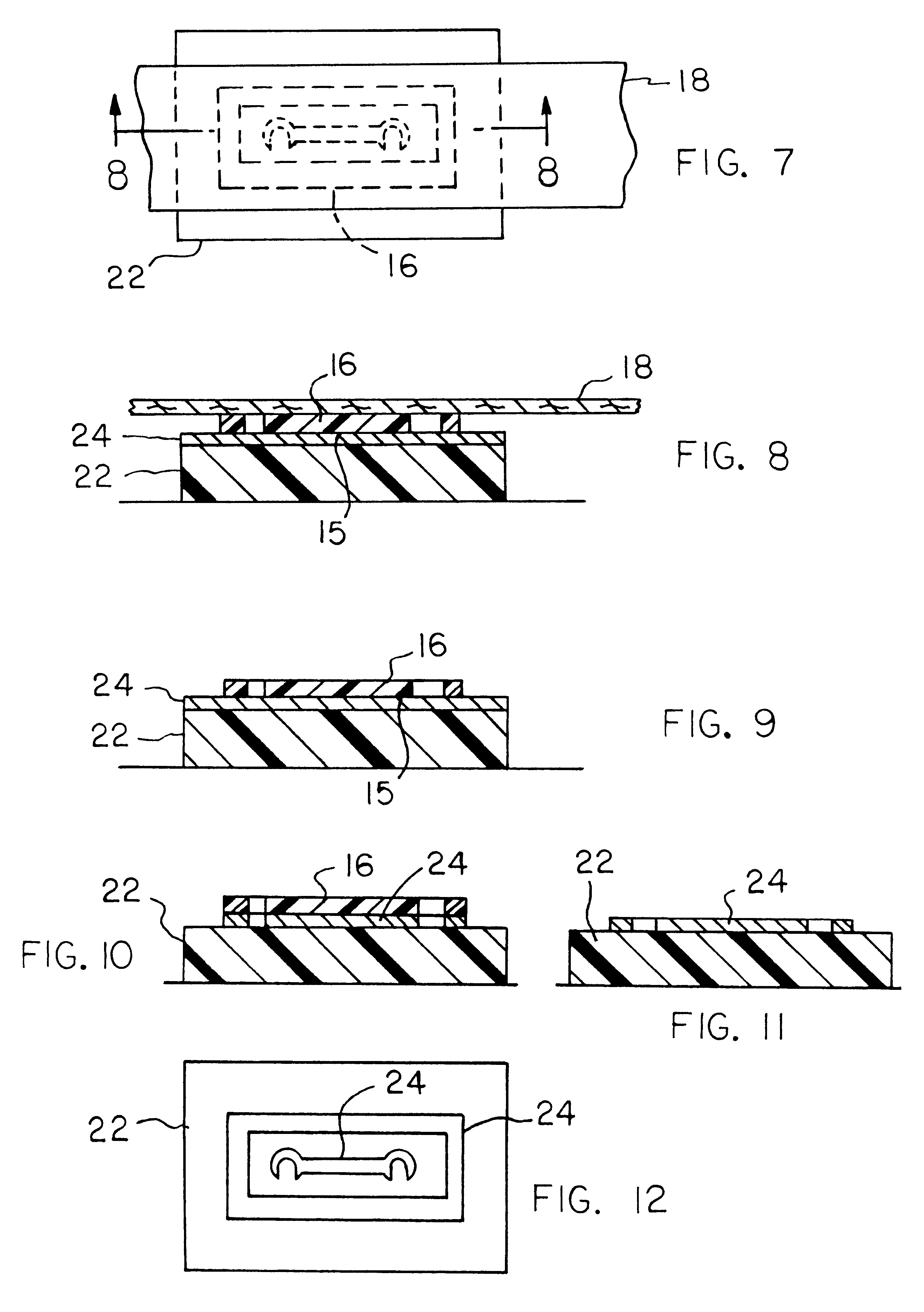Method of forming a printed circuit board
- Summary
- Abstract
- Description
- Claims
- Application Information
AI Technical Summary
Benefits of technology
Problems solved by technology
Method used
Image
Examples
Embodiment Construction
FIG. 1, is a plan view of an illustrative circuit pattern formed on a plastic masking sheet, by cutting, burning, or laser action.
FIG. 2, is a sectional view taken on line 2--2 in FIG. 1.
FIGS. 1 and 2, show a sheet of masking material 10 adhesively secured to a flat substrate surface 12. In FIG. 2, the lower face of sheet 10 is a pre-coated with a first contact adhesive 15, whereby sheet 10 is releasably secured to support surface 12. Support surface 12 is glossy (non-porous), whereby the surface acts as a release surface at a subsequent point in the manufacturing cycle.
FIG. 3, is a sectional view taken in the same direction as FIG. 2, but after excess material has been removed from the masking sheet.
A cutting mechanism is applied to the exposed (upper) surface of sheet 10, to form a pattern 16 in the sheet. The cutting mechanism can be a manually operated knife, or (in a more elaborate system) a plotter cutter, a low power laser controlled by a computer that is connected to a scann...
PUM
| Property | Measurement | Unit |
|---|---|---|
| Flexibility | aaaaa | aaaaa |
| Electrical conductor | aaaaa | aaaaa |
| Adhesivity | aaaaa | aaaaa |
Abstract
Description
Claims
Application Information
 Login to View More
Login to View More - R&D
- Intellectual Property
- Life Sciences
- Materials
- Tech Scout
- Unparalleled Data Quality
- Higher Quality Content
- 60% Fewer Hallucinations
Browse by: Latest US Patents, China's latest patents, Technical Efficacy Thesaurus, Application Domain, Technology Topic, Popular Technical Reports.
© 2025 PatSnap. All rights reserved.Legal|Privacy policy|Modern Slavery Act Transparency Statement|Sitemap|About US| Contact US: help@patsnap.com



